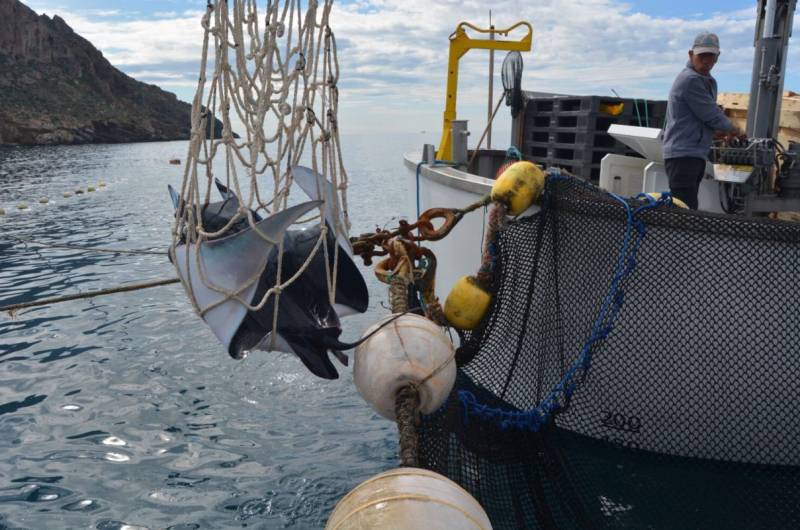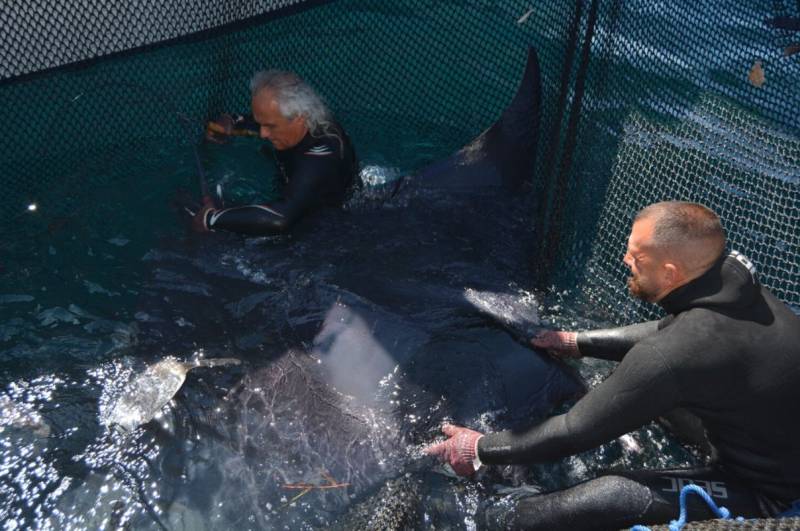Date Published: 12/06/2025
Over 30 endangered manta rays released after being captured by accident in La Azohía, Murcia
Conservation groups and traditional fishers join forces to protect endangered marine species in the Mediterranean
More than 30 manta rays accidentally caught in the Almadraba of
La Azohía, near Cartagena, have been successfully tagged and released back into the Mediterranean Sea thanks to a landmark collaboration between the traditional fishery,
ANSE and
WWF Spain.
The initiative follows the signing of a cooperation agreement aimed at improving the management of endangered or threatened marine species. The partnership’s primary goals are to reduce the mortality of vulnerable animals like the manta ray and to strengthen efforts to monitor and protect their populations.
The Almadraba of La Azohía, a centuries-old fishing method and the only one of its kind still operating along the Mediterranean coasts of the Iberian Peninsula, captured 32 giant devil rays (Mobula mobular) during its spring operations. Technicians from WWF and ANSE were on hand to tag and release 30 of them, with four individuals also fitted with satellite tracking devices. The rays ranged in size from 90 centimetres to four metres in wingspan.
Environmental groups described the release as a “milestone in the conservation of this species in the Mediterranean”. ANSE noted that although the appearance of manta rays in the southeast of the Iberian Peninsula is unusual, a similar event occurred in 2024, when 28 rays were tagged using dart-type markers.
The release operation involved lifting the animals from the nets using cranes on the trap boats. In some instances, divers assisted in ensuring the safe return of the rays to the sea. All specimens were reported to be in good condition upon release.
Both ANSE and WWF are investigating the increase in sightings and strandings, working with other organisations to determine whether a common cause lies behind the recent uptick in manta ray activity near the shore.
The initiative comes as global concern for rays and sharks gains momentum. At this week's UN Ocean Conference in Nice, WWF launched a worldwide call to action urging governments to implement science-based, coordinated conservation efforts. More than 50 organisations and several countries, including Spain, France and the UK, have already pledged support.
The Mediterranean’s giant devil ray, which can exceed five metres in wingspan, is classified as ‘Endangered’ by the International Union for Conservation of Nature (IUCN). The species suffers from a naturally low birth rate, typically one to two offspring every two to three years, and is highly vulnerable to accidental capture in fishing operations.
As sightings of manta rays increase in the region, conservationists are hopeful that the collaboration between traditional fisheries and environmental organisations will set a precedent for marine species protection in the Mediterranean and beyond.
Images: ANSE
article_detail

|













